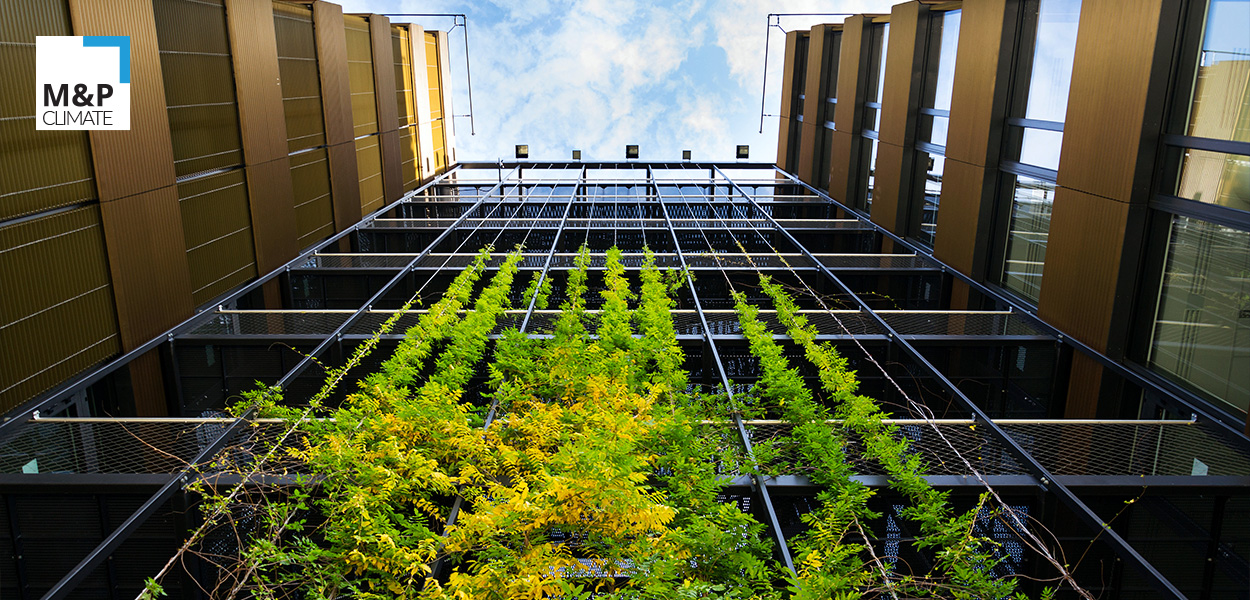As climate change accelerates, the need for resilient infrastructure within the EU has become urgent. Extreme weather events like floods, heatwaves, and storms are more frequent across Europe, underlining the importance of disaster preparedness and risk management to protect communities and economies. This transition goes beyond immediate safety measures; it's an opportunity to integrate sustainable infrastructure and green infrastructure solutions that foster long-term climate resilience across the EU.
At M&P Climate, we specialise in designing resilient, sustainable infrastructure solutions that prepare EU communities for an uncertain future. Below, we'll explore how climate change adaptation strategies like flood mitigation, coastal protection, and heat-resistant materials are helping EU countries build resilience and enhance urban sustainability.
The Growing Need for Climate-Resilient Infrastructure in the EU
The impact of climate change on infrastructure in the EU is extensive. According to a European Environment Agency (EEA) report, weather-related damages have cost the EU economy more than €450 billion over the last 40 years. Cities and urban areas, particularly those in flood-prone regions, are highly vulnerable to the effects of climate change, making infrastructure planning critical for building resilience to climate change across Europe.
A 2022 IPCC report projects that Without immediate climate change adaptation measures, rising sea levels and extreme heat events will severely challenge European infrastructure. By investing in sustainable infrastructure for climate resilience, EU nations can mitigate these risks, protect public safety, and safeguard the economy against severe climate impacts.
Core Adaptation Strategies for Building Resilient Infrastructure in the EU
1. green infrastructure for flood mitigation
Green infrastructure solutions, such as green roofs, permeable pavements, and rain gardens, have become essential tools in Europe's fight against flooding. Cities like Copenhagen have invested heavily in green infrastructure to reduce flood risks and improve urban biodiversity. These initiatives are crucial for flood mitigation, as they absorb and slow down stormwater runoff, reducing pressure on drainage systems.
According to the European Commission, green infrastructure could help reduce urban flood damage by up to 35%, highlighting the importance of natural solutions to climate resilience.
2. coastal protection and urban resilience
Coastal protection is crucial for cities in low-lying coastal areas, such as the Netherlands, that face rising sea levels and increased storm surges. Projects such as seawalls, dykes, and restored dunes serve as barriers that protect coastal communities. The Netherlands, a global leader in flood defence, has invested over €1.2 billion annually in infrastructure to safeguard against sea-level rise and support urban resilience.
Similarly, France is incorporating adaptation strategies along its Atlantic and Mediterranean coasts, implementing projects to prevent erosion and bolster coastal ecosystems.
3 Heat-Resistant Materials for Rising Temperatures
Rising temperatures across Europe make heat-resistant materials vital for urban infrastructure. Materials like cool pavements, reflective coatings, and heat-resistant building facades can significantly reduce temperatures, countering the urban heat island effect. In Madrid, the government has launched the "Madrid Green" initiative, incorporating heat-absorbing materials into roads and pavements, thus reducing surface temperatures by up to 12°C.
Using innovative, heat-resistant materials in sustainable construction for climate adaptation helps reduce energy demand and cooling costs, contributing to urban resilience and long-term sustainable infrastructure.
4. integrated disaster preparedness and risk management
The EU places a strong emphasis on disaster preparedness as part of its climate adaptation framework. EU countries have implemented risk management frameworks that focus on identifying and mitigating vulnerabilities. Italy, for example, has invested in early warning systems and updated building codes to better withstand earthquakes and floods.
In Germany, infrastructure planning includes comprehensive flood defences, including the construction of levees and reservoirs in flood-prone areas, reducing the risk of severe climate impacts. These frameworks are critical to addressing climate change impact on infrastructure across the EU.

Data-Driven Overview: Key Climate Adaptation Measures in the EU
The table below provides a snapshot of some effective climate change adaptation strategies in the EU, along with their benefits in enhancing infrastructure resilience.
| Adaptation Measure | Purpose | Estimated benefit |
| Green Infrastructure | Flood Mitigation | Reduces urban flood damage by up to 35% |
| Coastal Protection | Sea-Level Rise Defence | Prevents erosion, saving billions in coastal damage |
| Heat-Resistant Materials | Urban Heat Reduction | Lowers urban temperatures, reduces cooling energy demand |
| Disaster Preparedness & Risk Management | Climate Impact Mitigation | Reduces vulnerability to extreme events, enhances recovery |
Future-Proofing Infrastructure: Sustainable Solutions by M&P Climate
At M&P Climatewe recognise the need for resilient infrastructure tailored to the unique needs of European cities and climate conditions. Our solutions encompass climate change adaptation strategies, designing infrastructure that ensures urban resilience, and incorporating sustainable construction practices with long-term disaster preparedness in mind. From coastal protection projects to the use of heat-resistant materials, M&P Climate provides services that help cities and businesses adapt to climate impacts.
With our expertise in risk management and sustainable design, we enable infrastructure projects that promote sustainable infrastructure for climate resilience, fostering safe, adaptable, and eco-friendly growth.
The Urgent Call for Resilience in the EU
The effects of climate change are already impacting European infrastructure, with a direct influence on the safety, economy, and quality of life in EU countries. By adopting climate change adaptation strategies, cities and businesses can work towards a resilient and sustainable future. At M&P Climate, we are committed to supporting these efforts with tailored solutions that build resilient infrastructure for today and future generations.
To learn how M&P Climate can support your climate resilience goals, visit our website at M&P Climate.

